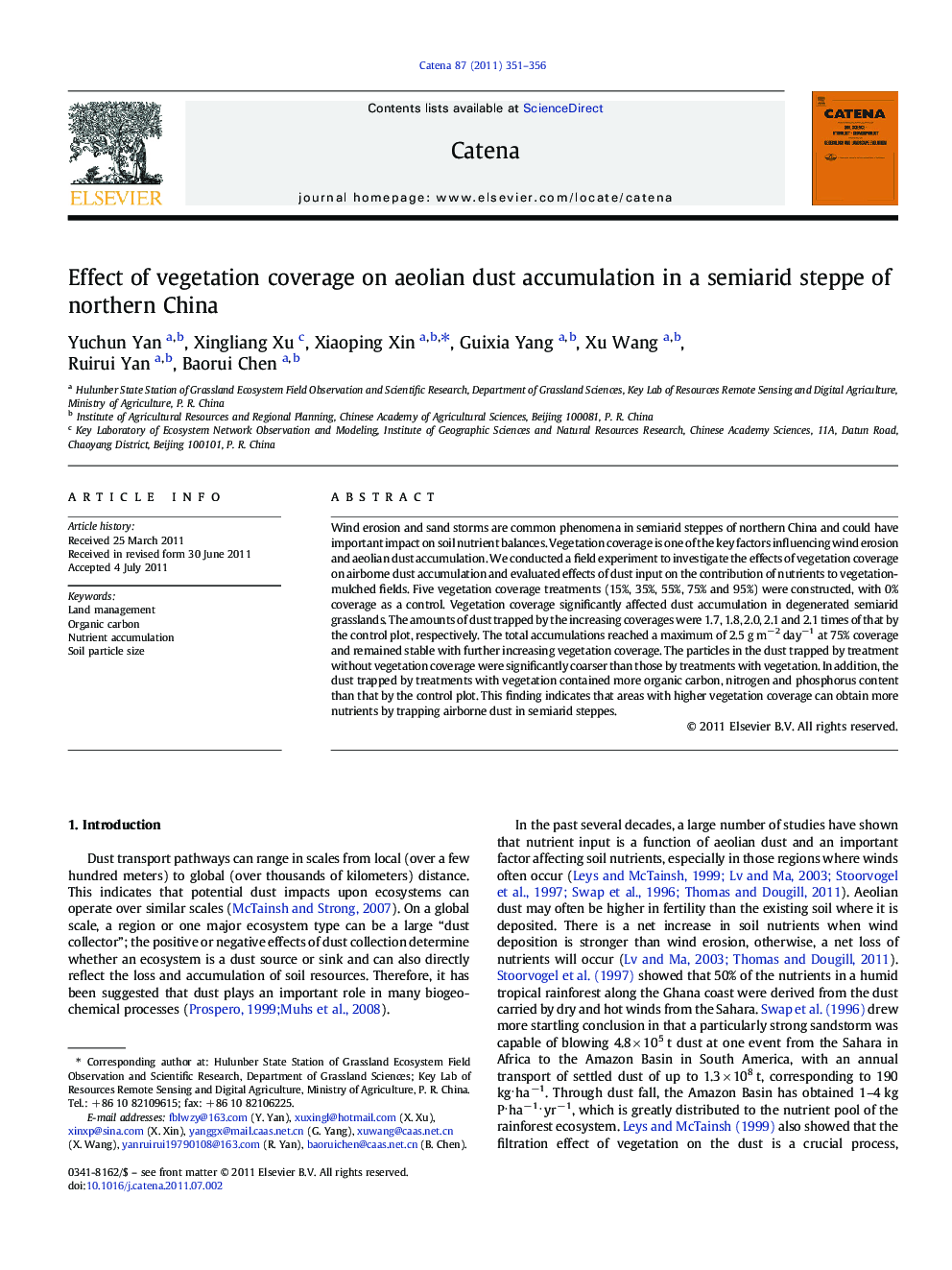| Article ID | Journal | Published Year | Pages | File Type |
|---|---|---|---|---|
| 4571944 | CATENA | 2011 | 6 Pages |
Wind erosion and sand storms are common phenomena in semiarid steppes of northern China and could have important impact on soil nutrient balances. Vegetation coverage is one of the key factors influencing wind erosion and aeolian dust accumulation. We conducted a field experiment to investigate the effects of vegetation coverage on airborne dust accumulation and evaluated effects of dust input on the contribution of nutrients to vegetation-mulched fields. Five vegetation coverage treatments (15%, 35%, 55%, 75% and 95%) were constructed, with 0% coverage as a control. Vegetation coverage significantly affected dust accumulation in degenerated semiarid grasslands. The amounts of dust trapped by the increasing coverages were 1.7, 1.8, 2.0, 2.1 and 2.1 times of that by the control plot, respectively. The total accumulations reached a maximum of 2.5 g m−2 day−1 at 75% coverage and remained stable with further increasing vegetation coverage. The particles in the dust trapped by treatment without vegetation coverage were significantly coarser than those by treatments with vegetation. In addition, the dust trapped by treatments with vegetation contained more organic carbon, nitrogen and phosphorus content than that by the control plot. This finding indicates that areas with higher vegetation coverage can obtain more nutrients by trapping airborne dust in semiarid steppes.
► We demonstrate a major impact of vegetation cover on aeolian dust accumulation. ► Two critical values of vegetation cover exist for dust and for nutrient accumulation. ► 15% vegetation coverage is a suitable critical value for dust accumulation. ► The critical value of vegetation coverage is 35% for nutrients accumulation.
